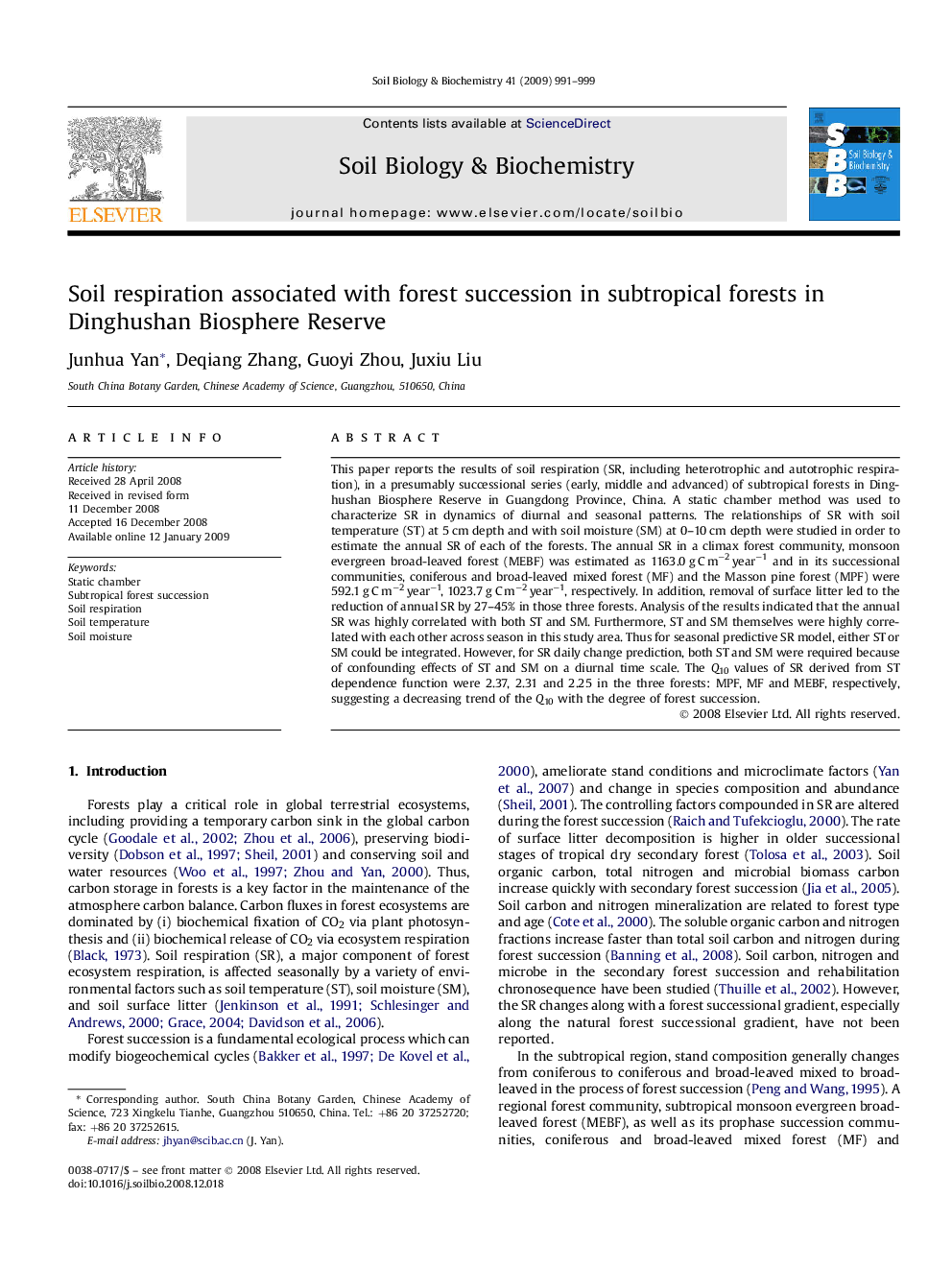| Article ID | Journal | Published Year | Pages | File Type |
|---|---|---|---|---|
| 2025764 | Soil Biology and Biochemistry | 2009 | 9 Pages |
This paper reports the results of soil respiration (SR, including heterotrophic and autotrophic respiration), in a presumably successional series (early, middle and advanced) of subtropical forests in Dinghushan Biosphere Reserve in Guangdong Province, China. A static chamber method was used to characterize SR in dynamics of diurnal and seasonal patterns. The relationships of SR with soil temperature (ST) at 5 cm depth and with soil moisture (SM) at 0–10 cm depth were studied in order to estimate the annual SR of each of the forests. The annual SR in a climax forest community, monsoon evergreen broad-leaved forest (MEBF) was estimated as 1163.0 g C m−2 year−1 and in its successional communities, coniferous and broad-leaved mixed forest (MF) and the Masson pine forest (MPF) were 592.1 g C m−2 year−1, 1023.7 g C m−2 year−1, respectively. In addition, removal of surface litter led to the reduction of annual SR by 27–45% in those three forests. Analysis of the results indicated that the annual SR was highly correlated with both ST and SM. Furthermore, ST and SM themselves were highly correlated with each other across season in this study area. Thus for seasonal predictive SR model, either ST or SM could be integrated. However, for SR daily change prediction, both ST and SM were required because of confounding effects of ST and SM on a diurnal time scale. The Q10 values of SR derived from ST dependence function were 2.37, 2.31 and 2.25 in the three forests: MPF, MF and MEBF, respectively, suggesting a decreasing trend of the Q10 with the degree of forest succession.
